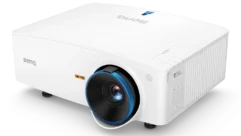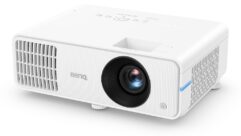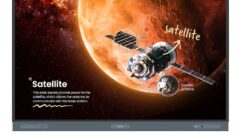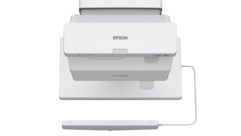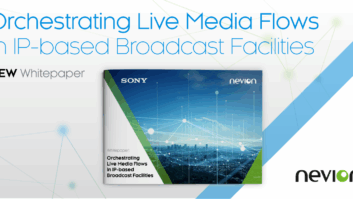Projectors and screens continue to be relevant to hold their own, as display options expand and diversify, in resolution and interactivity. New laser 4K projectors have challenged benchmarks on size, weight, price and performance for their respective categories. Ease of installation has increased for both projectors and screens, either through weight reduction, new designs, more orientation options, industrial design, and/or supporting calibration software.

In November, Barco debuted the latest Barco Pulse low latency projection system, the 100% solid-state LED FL40. With no moving parts, the FL40 is designed from the ground up for the simulation environment’s rigorous training requirements; the sister FS40 supports night vision goggle (NVG) training with IR LED and offers dual input capability at 120Hz. Combining HLD and LED illumination technology with a DLP light engine, the FL40 promises excellent brightness and color fidelity, combined with extreme detail and a lifetime with maintenance-free 50,000 hours. Thanks to the Constant Light Output (CLO) functionality, it claims complete predictability in linear brightness performance and lifetime over the life of the projector. The true solid-state nature of the FL40 (with no moving parts inside), combined with the built-in ruggedness, makes the projector very suited for motion platform operation. The FL40 is built on the proprietary Barco Pulse software platform. This powerful and flexible architecture allows for advanced low-latency processing operations designed to take place in just one single step.
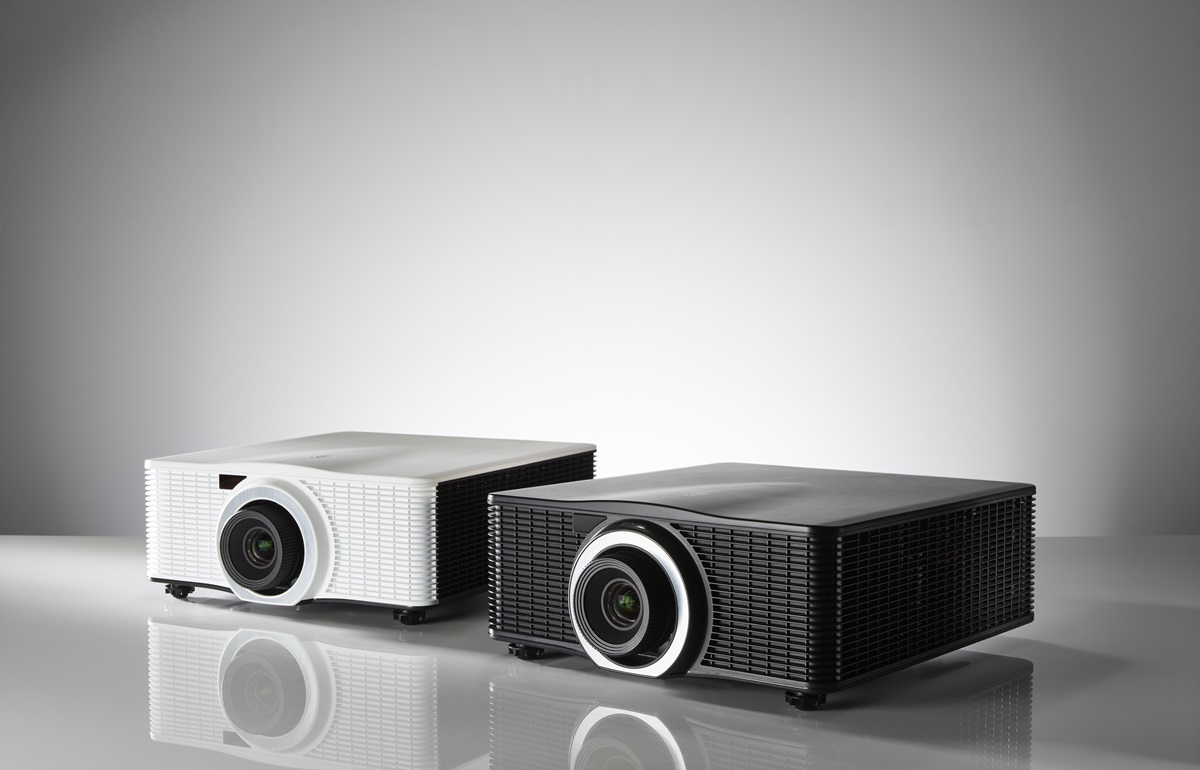
Then at ISE, Barco brought a strong diverse showing. The new G60 value series expands the laser light single-chip offering with six compact lens-shift-capable projectors between 7 and 10K. Barco’s Projector Toolset software applies to this range, allowing installation and management to be done via computer. At the high end, new models joined the F80 range, which is pitched at museums, board rooms, and auditoriums; with their 3D capability, they’re also deployed for theme park dark rides and interactive experiences. Finally, ISE saw an expansion of Barco’s UDX series, which the company launched two years ago with a goal of revolutionizing projected images. Since then UDX projectors have wowed in dramatic installations all over the world. The UDX news at ISE was more lumens in a more compact form factor, with four additional models including two 26K and two 40K units. The UDX-40K is the industry’s smallest DLP projector within the 30K-40K range and Barco calls it the brightest laser projector under 200lbs. Its FLEX feature allows users to regulate and adapt brightness and resolution, reflecting an industry-wide trend towards more flexible, agile projectors that can adapt to artistic and architectural needs.
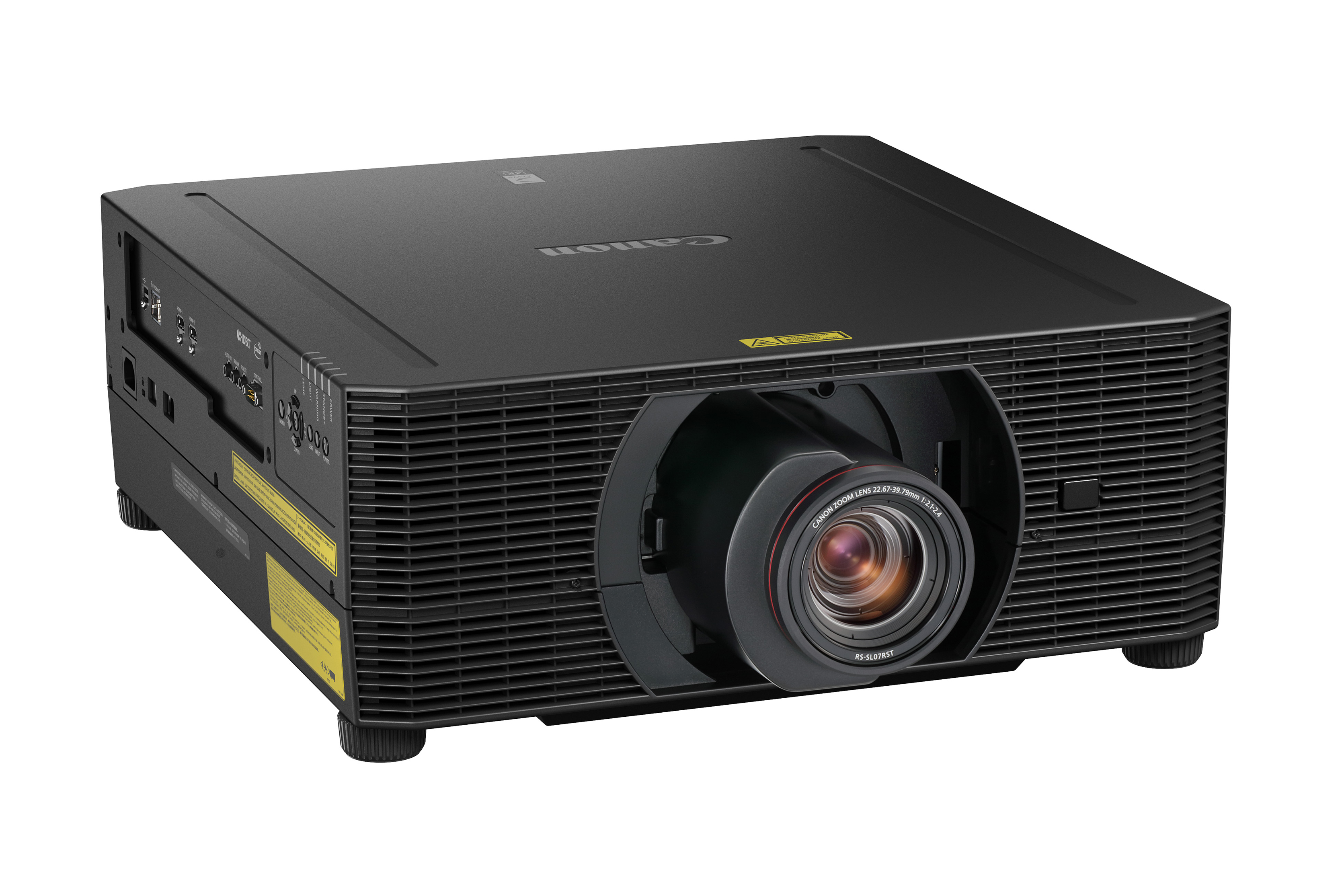
Also mid-November Canon U.S.A. claimed “the world’s smallest and lightest native 4K LCOS projectors in their class” with the introduction of the REALiS 4K6020Z and 4K5020Z (as well as a new 4K zoom lens). Both new projectors measure 18.8in (W) x 7.1in (H) x 21.4in (D) and weigh just 41.8 pounds, which the company compared as “less than half the weight of competing Native 4K laser projectors.” Canon is also adding to the company’s lineup of RS projector lenses with the introduction of the RS-SL07RST 4K Standard Zoom Lens. The RS-SL07RST projector lens is the seventh in the lineup; all seven RS projector lenses are compatible with the two new projectors. The new 4K6020Z and 4K5020Z Native 4K Laser LCOS Projectors are pitched at a variety of applications, including art galleries, museums, schools and medical institutions. They are also suitable for product design and simulation use where both high-quality imaging and accurate color reproduction are a must.
Both projectors feature LCOS panels and Canon’s proprietary AISYS optical system that helps to deliver 6000 and 5000 lumens respectively. This technology, when combined with true Native 4K (4096×2160) resolution, helps both projectors to produce a cleaner and more robust image with virtually no grid lines. Contrast is 22,000:1 achieved by the combination of an image engine that analyzes the contrast of each frame and a double-door type shutter system, which allows the iris to operate fast-tracking scenes instantly and reducing light leaks. The laser-light source supports up to 20,000 hours of operation in typical use or up to 40,000 hours in Canon’s Long Duration Mode. Start up clocks in as little as two seconds while in Fast Boot mode. In addition, users are able to create presets to be set-up to their specific preferences and needs. HDR support (including HDR10 and Hybrid Log-Gamma) in both expands color-gamut range but also the overall brightness. Compatible with seven optional genuine Canon interchangeable lenses, including Canon’s new RS-SL07RST 4K Standard Zoom Lens. This lens can project images up to 600 inches and can even project onto curved surfaces; maintaining focus in the center of the image when peripheral focus has been adjusted.

In January, BenQ debuted two new 4K laser projectors designed to support 4K HDR presentations in boardrooms, huddle rooms, and collaborative spaces. BenQ positions the LK953ST and LK952 Blue Core displays as the first HDR laser projectors for business with a focus on fine detail for graphics. Both produce 3840 x 2160 resolution with 8.3 million distinct pixels for each frame, achieving CTA’s UHD standard. Both deliver 5,000 lumens of Blue Core laser-powered brightness. Both are single-DMD DLP (0.47-in.) to replicate Retina-style displays and utilized BenQ’s proprietary 4K Image Amplifying Technology, and its Pixel Enhancer 4K motion-adaptive edge enhancement. Both incorporate BenQ’s DustGuard technology: sealed laser modules protect the laser bank with a lock-and-key design that prevents dust accumulation, and meets the international dustproof rating of IP5X. The projectors leverage the versatility of HDMI out and support the company’s InstaShow collaboration tool, a software-free, one-button start for wireless presentations up to 16 presenters. Installation features include flexibility with horizontal and vertical lens shift and 360-degree rotation for projection onto ceilings, walls, floors or angled signage.
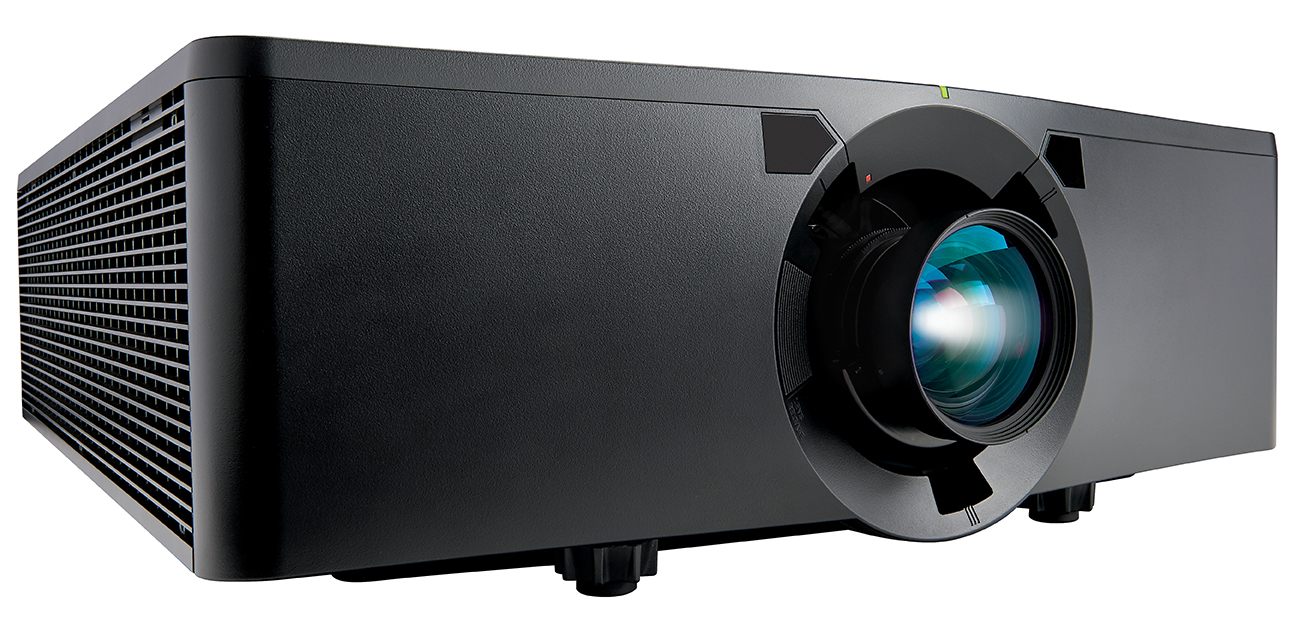
With 4K UHD resolution and Christie BoldColor technology, the Christie 4K10-HS and HK710-HS 1DLP laser projectors are also equipped with Christie’s unique Twist warping and blending software. This, and their compact size, quiet performance, and omnidirectional capability makes them flexible for a wide range of business, public, education, and entertainment venues. The BoldColor Technology uses blue and red laser diodes with what Christie describes as a patented optical chamber, and supporting software to saturate color. The projector supports 4K60 video over a single HDMI or Display Port cable; an integrated camera assists with setup and alignment, and delivers auto zoom and focus. Both models are compatible with two new 4K specific lenses and both feature two expandable option slots, SDVoE connectivity for video over IP and option of using the Christie Terra products.
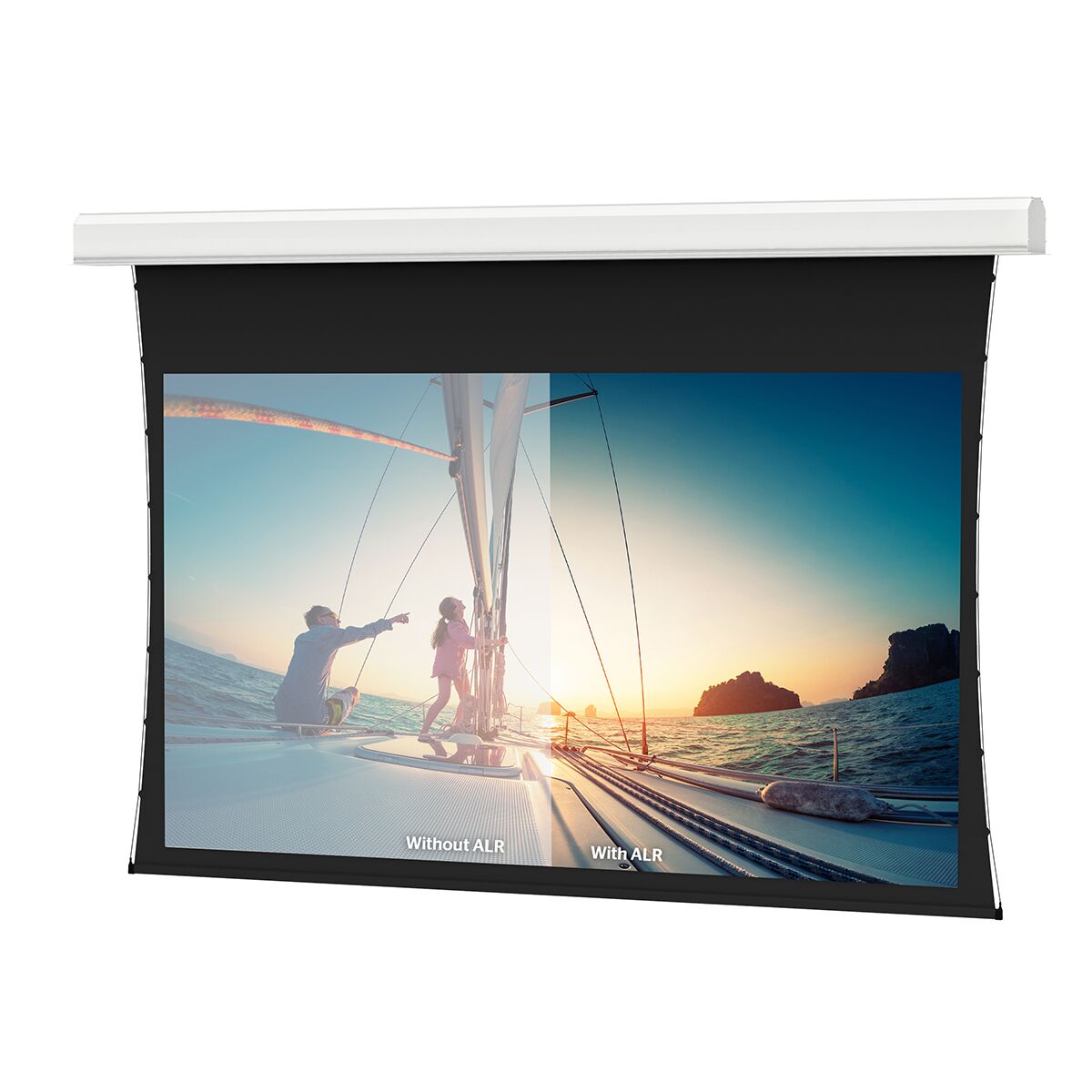
Announced at press time, Da-Lite announced the new Parallax Stratos 1.0 screen is designed for rejecting ambient light in large-scale projection. Offering the freedom to install seamless ALR screens up to 16 feet high, Parallax Stratos is available in a wide array of core Da-Lite tensioned electric and fixed frame options. Da-Lite describes this Contrast Based ALR surface as rejecting up to 80% of ambient light with 1.0 gain for standard throw projectors (1.0:1 or greater). Contrast Based ALR prevents washed out projections by maintaining and enhancing image brightness.
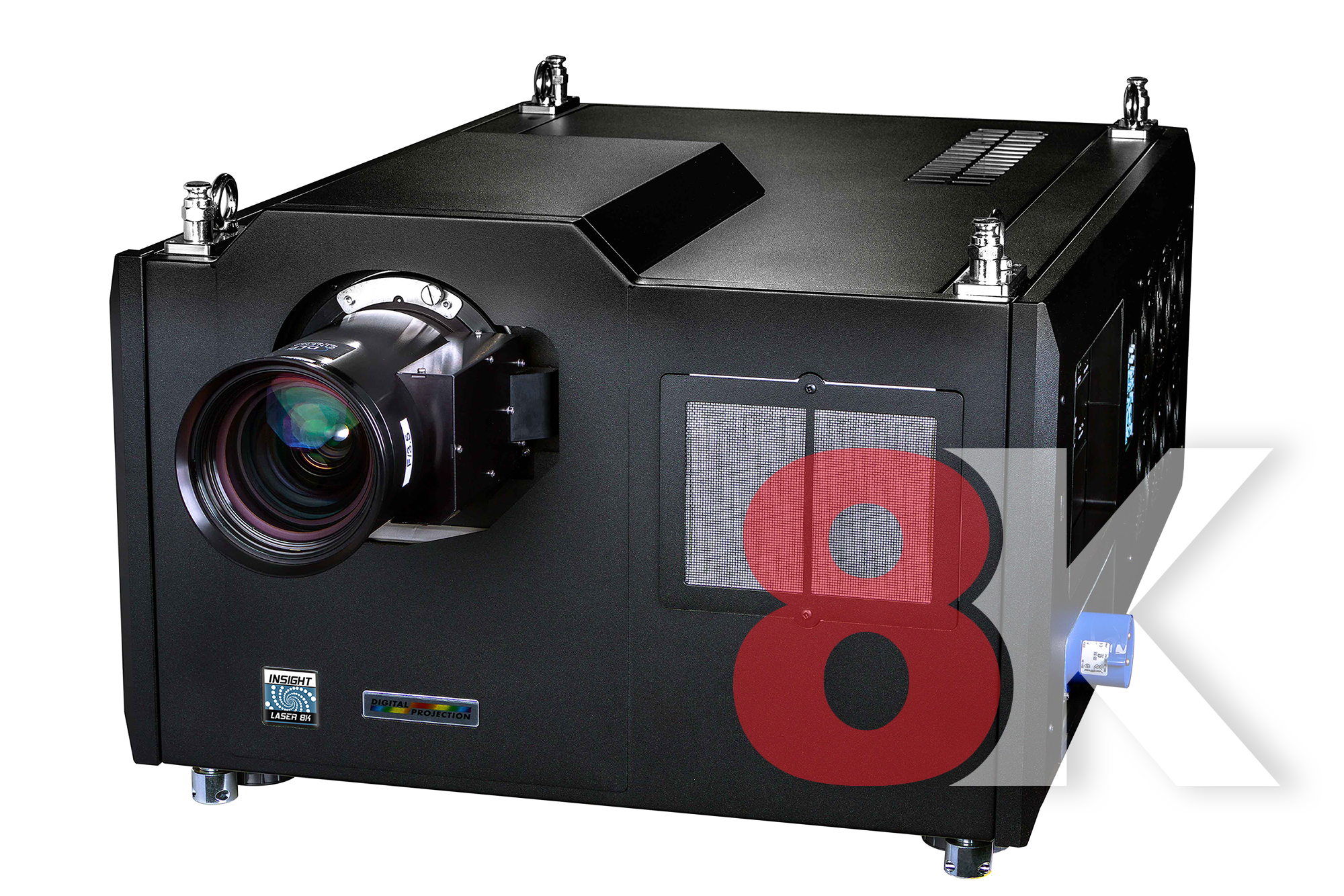
At ISE 2019, Digital Projection unveiled the INSIGHT 4K HFR 360 Multi-View 3D projector. Made possible by ultra-fast frame rates and high resolution, this unique multiview solution allows multiple viewers to have a unique viewing experience relative to their changing positions—from a single projector. This allows the users to see and interact with the displayed content and each other in a truly collaborative manner. Aside from visualization applications and virtual rides in theme parks, this technology applies to museums, with the ability to enable a virtual tour or interactive with an artifact with a personalized, high-resolution view for each user.
Digital Projection also brought its 8K DLP laser projector to ISE 2019, the INSIGHT LASER 8K, a world’s first when it originally debuted at last year’s ISE. Developed in collaboration with Delta Electronics, it provides an ultra-high 8K resolution (7680 X 4320) of 33-million pixels with 36,000 lumens of solid-state laser-phosphor illumination— obviously pegged at resolution-critical, immersive visualization and large-venue applications. The INSIGHT LASER 8K utilizes DLP technology incorporating 3×1.38-in. DarkChip DMD chips. On the software side, it carries DP’s proprietary Smear Reduction Technology, as well as the company ColorMax technology to ensure color accuracy and black levels. These technologies produce accurate imaging characteristics, suited for matching projectors in tiled or blended applications. A capable selection of zoom lenses, providing extensive lens shift, ensures integrators installing the INSIGHT LASER 8K will have complete flexibility with respect to projector placement in both portrait and landscape. A companion controller software is ideal for use in large installations or where projectors are in multiple locations in a building; the software can dramatically reduce the time required for setup and configuration is from a single network-enabled PC.
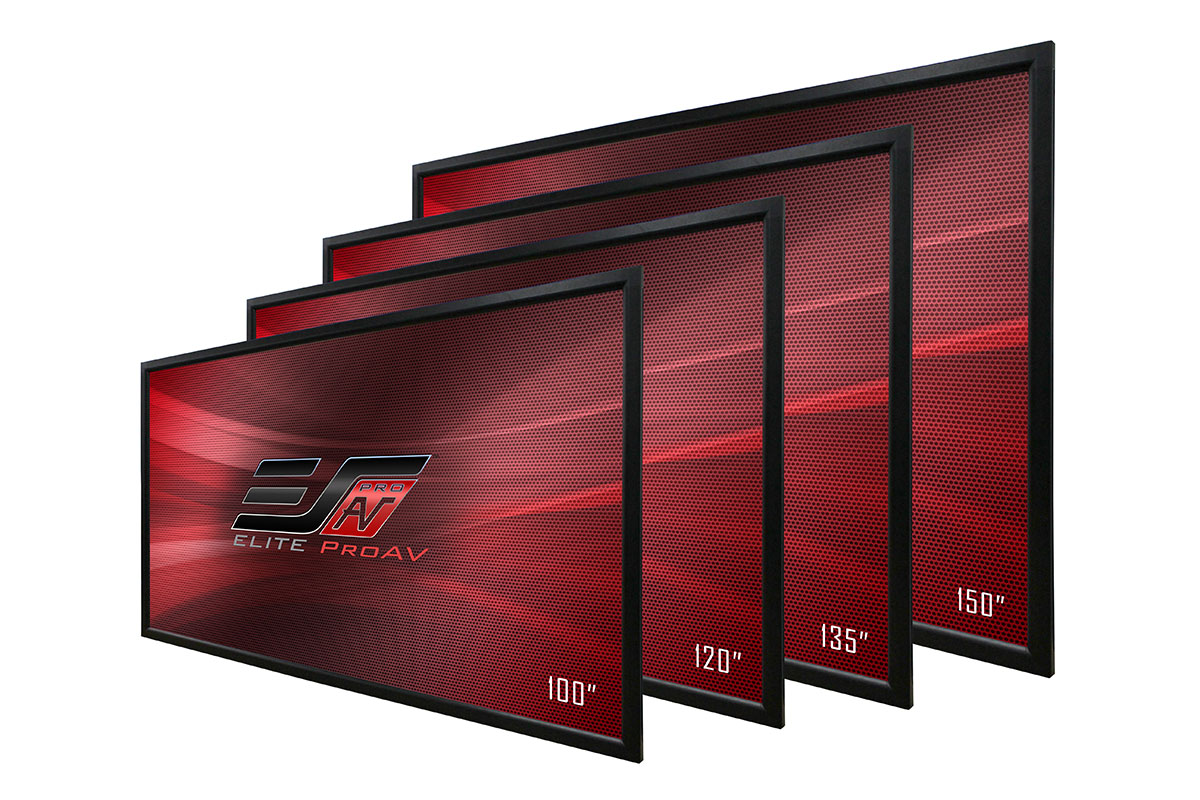
Elite Screens celebrates its 15th anniversary this year. Last month, the Elite ProAV division announced its Pro Frame Series projection screen for conference rooms, training facilities and hospitality venues. It uses Elite’s award winning CineWhite (matte white) front projection material. The anodized aluminum framework assembles quickly and installs easily. The end-result is a low-maintenance, high-quality video display and the sleek profile avoids collecting dust.
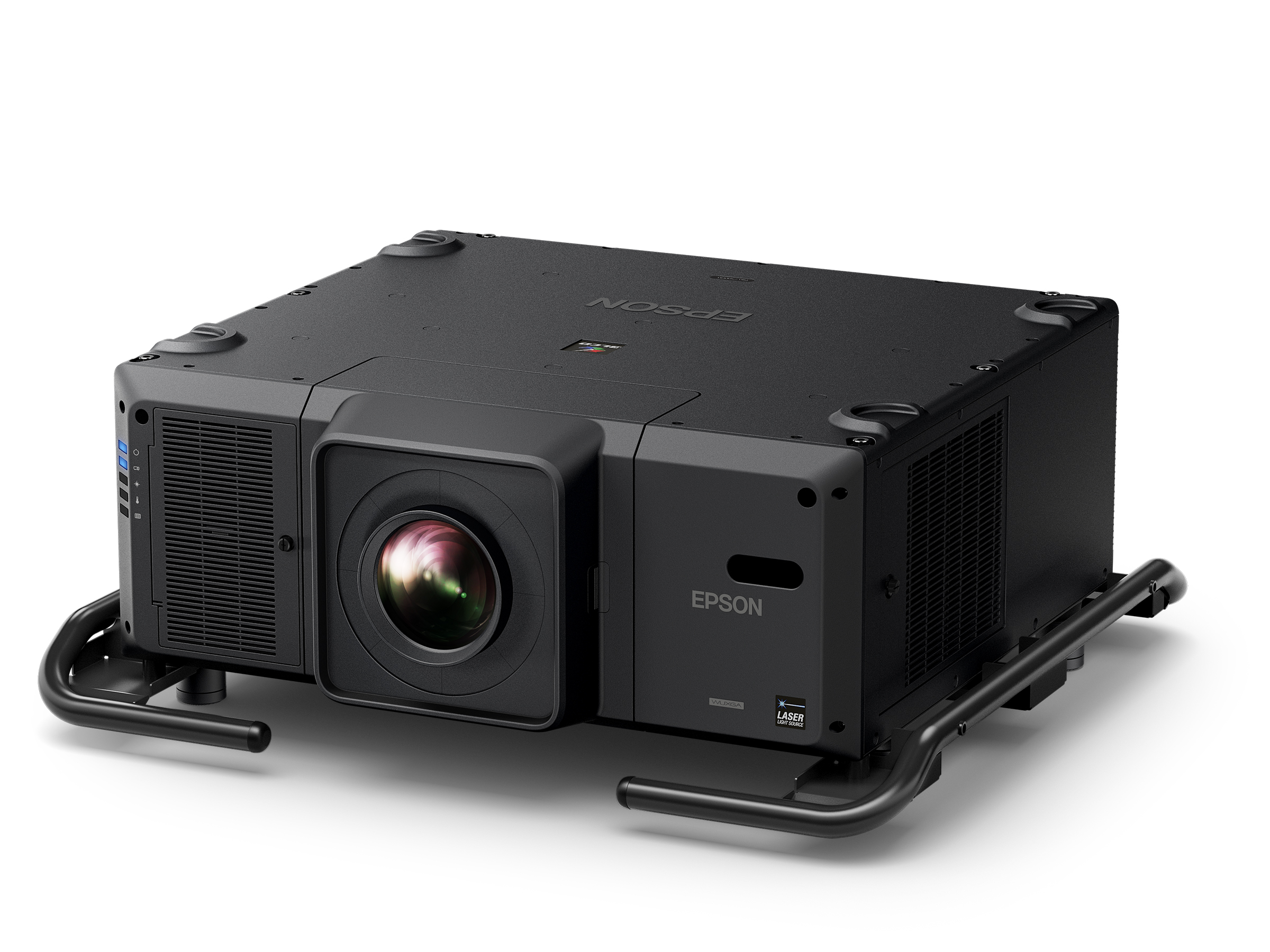
At ISE, Epson Pro showed a new high-end 30,000 lumens laser projector, the Epson Pro L30000U, suitable for permanent installations as well as rental and staging; it started shipping last month. In addition, Epson also brought a new 9,000 lumen laser projector, filling in the mid-range of the successful Pro L1000-Series. The show also saw the announcement of a range of compact, interchangeable-lens Pro L laser projectors—Epson’s most compact and unobtrusive interchangeable-lens laser projectors. With up to 7500 lumens and supported with Epson’s 4K enhancement, HDBaseT and wide lens shift, they are designed for large venue usage – from visitor attractions to higher education, museums to corporate meeting rooms. Epson also announced a new ultra-bright classroom projector, the PowerLite U50 WUXGA 3LCD projector designed for enterprise-level security via integrated wireless networking; teachers can wirelessly share content simultaneously from multiple devices.
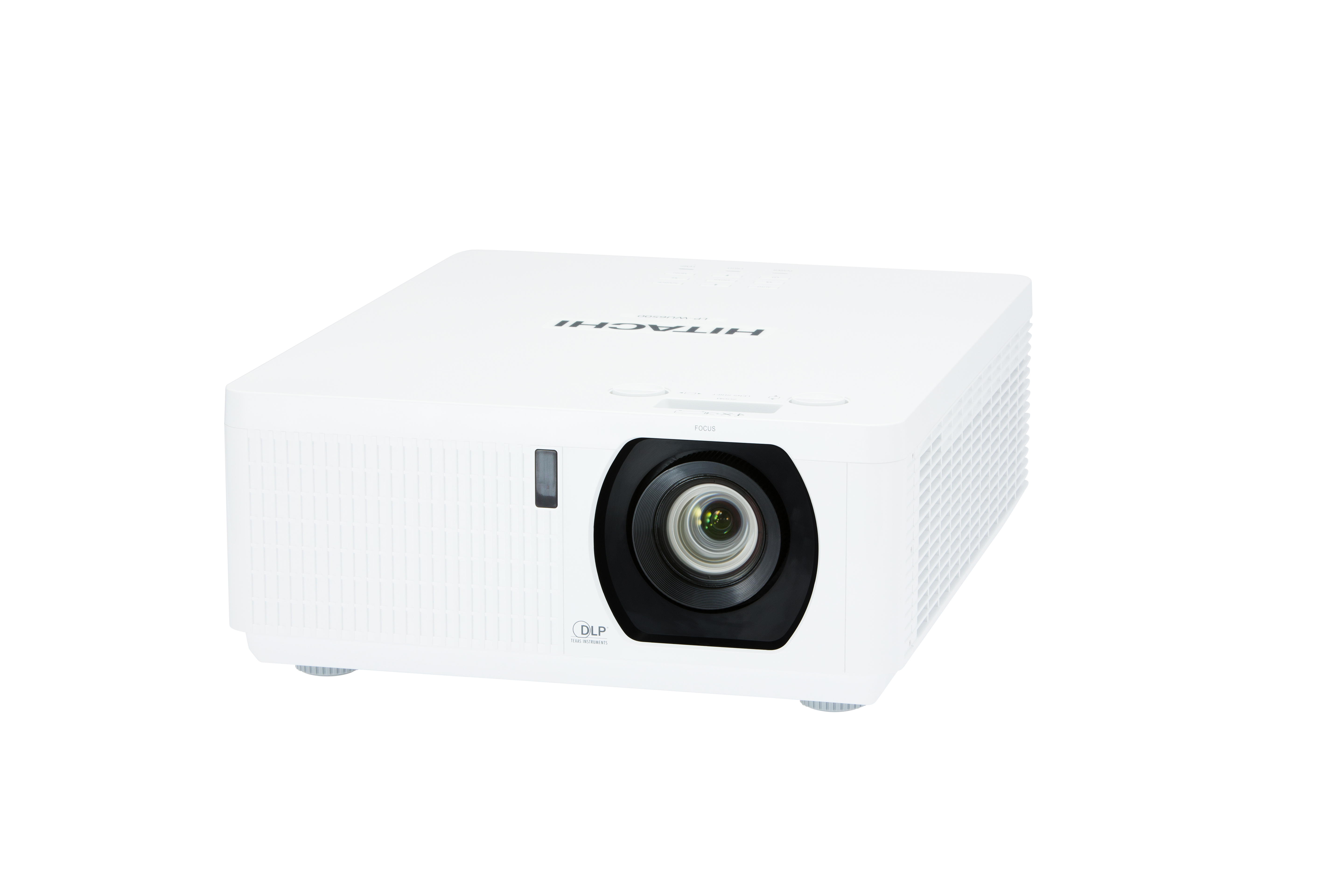
Last summer, Hitachi America expanded its Solid-State Light source (SSL) projector line to include the new LP-WU6500, 5,000 lumen laser projector and the LP-WU9100B, 10,000 lumen laser projector. The LP-WU9100B projector is the newest model in Hitachi’s solid-state light source projector line up. With WUXGA 1920 x 1200 resolution, the new 10,000-lumen laser projector is equipped with 360-degree installation, wide range of lens options, and five digital inputs including two HDMI, HDBaseT, DVI-D and 3G SDI. The 10,000-lumen laser projector is suitable for heavy usage, digital signage and 24/7 applications. The company also expanded its LCD projector line with four new 3LCD Laser Ultra Short Throw Projectors. The LP-AW4001, LP-AW3001 and interactive LP-TW4001 and LP-TW3001 models offer larger, more flexible display size at a lower cost. The four new models have a 500,000:1 contrast ratio, WXGA 1280×800 resolution and come with one HDMI and one HDMI/ MHL digital inputs. Offering a wider viewing angle and anti-glare, both the standard and interactive models support the preservation of whiteboards in the classrooms.

Making entry-level 4K accessible, NEC updated two popular laser/LCD projector models with December’s launch of the P525WL and P525UL. The P525WL replaces NEC’s P502WL-2, and the P525UL replaces NEC’s P502HL-2. For each new model, the imaging unit has been changed from DLP to LCD technology with 5200 center lumens. These 4K-ready projectors support UHD signals, while WXGA and WUXGA native resolutions produce high-definition images. Installation series features include manual horizontal and vertical lens shift, 1.6x zoom lens and HDBaseT input. Quick startup and shut-down ease operations for users, and the projectors claim quiet operation. Both models offer advanced networking capability and improved wireless collaboration capability. They feature Dual HDMI for seamless switching between Blu-ray, computer or other digital sources; USB with 2.0A support for powering third-party devices; LAN port for network control and asset management; and Optional Wireless Module (NP05LM1) with MultiPresenter capability for up to 16 simultaneous connections. They will begin shipping this month at a minimum advertised price of $2,299 (P525WL) and $3,099 (P525UL).
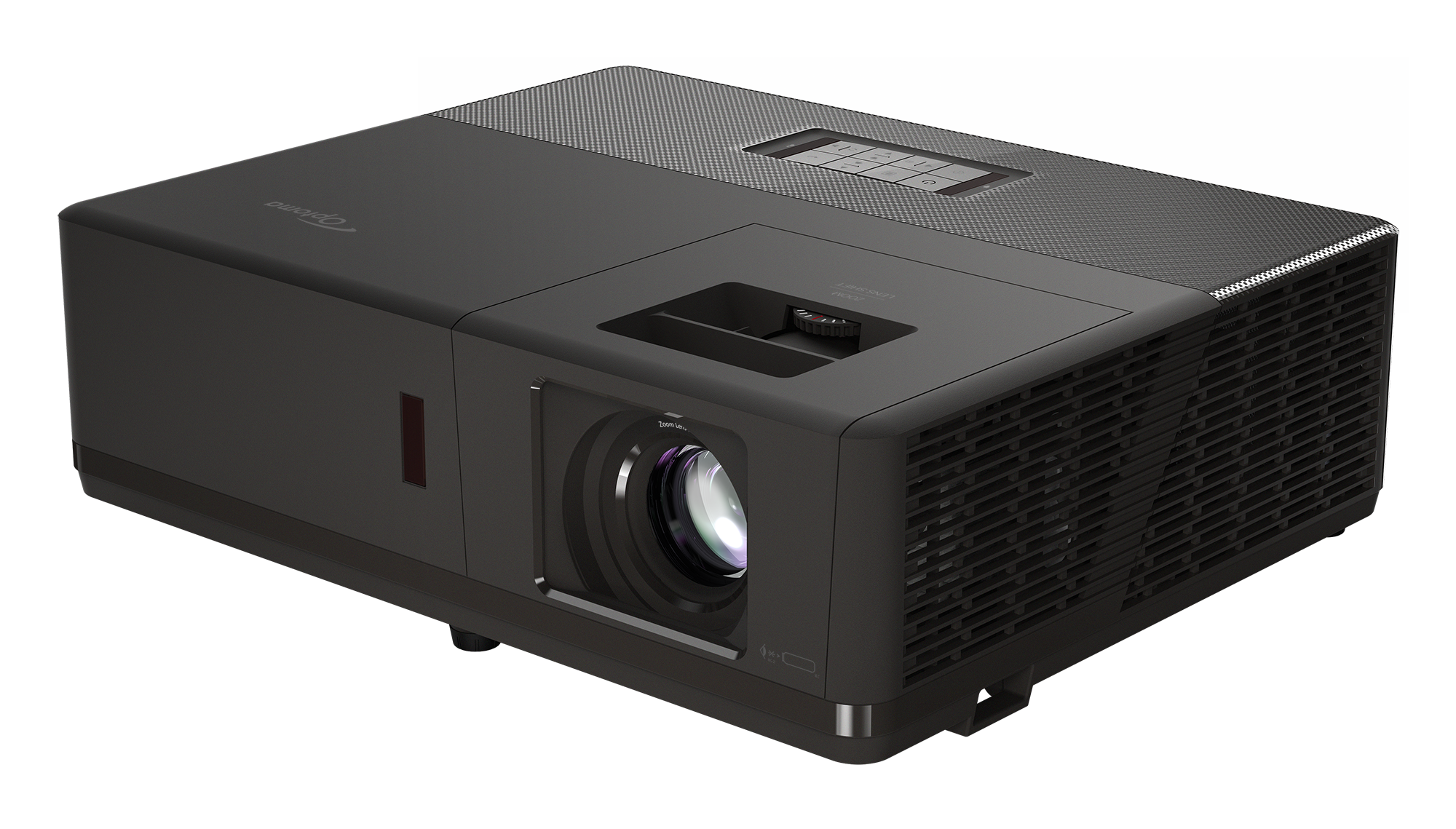
Last month, Optoma announced three new additions to its ProScene projector series featuring 4K HDR compatibility in a compact and lightweight design. The Optoma ZH506T, ZU506T and ZW506-W projectors feature a 300,000:1 contrast ratio and display more than one billion colors at 5,000- 5,200 lumens of brightness. Flexibility is supported with vertical lens shift (and optical zoom to 1.6X), four corner correction, and 360-degree and portrait mode performance. HDMI and VGA inputs provide connectivity to high-quality 4K HDR digital video while LAN and RS-232 enable control via Crestron, Extron, AMX or Telnet. Audio includes 2 x 10W stereo speakers. The ZH506T is 1080p (1920 x 1080) resolution at 5,000 lumens of brightness for an estimated street price of $2,999. The ZU506T is a WUXGA (1920 x 1200) at 5,000 lumens, for an estimated street price of $3,299. The Optoma ZW506-W is a WXGA (1280 x 800) at 5,200 lumens, at an estimated street price of $2,499. In addition, Optoma has launched its ZU610T WUXGA (1920 x 1200) 6,000-lumen laser projector for extra brightness in ambient light. The successor to the Optoma ZU510T, the Optoma ZU610T has a fixed lens design, a unique 1.2-2.13:1 throw ratio and 1.8x digital zoom to cover a wide range of projection distances. Input options include HDMI, VGA and S-Video.
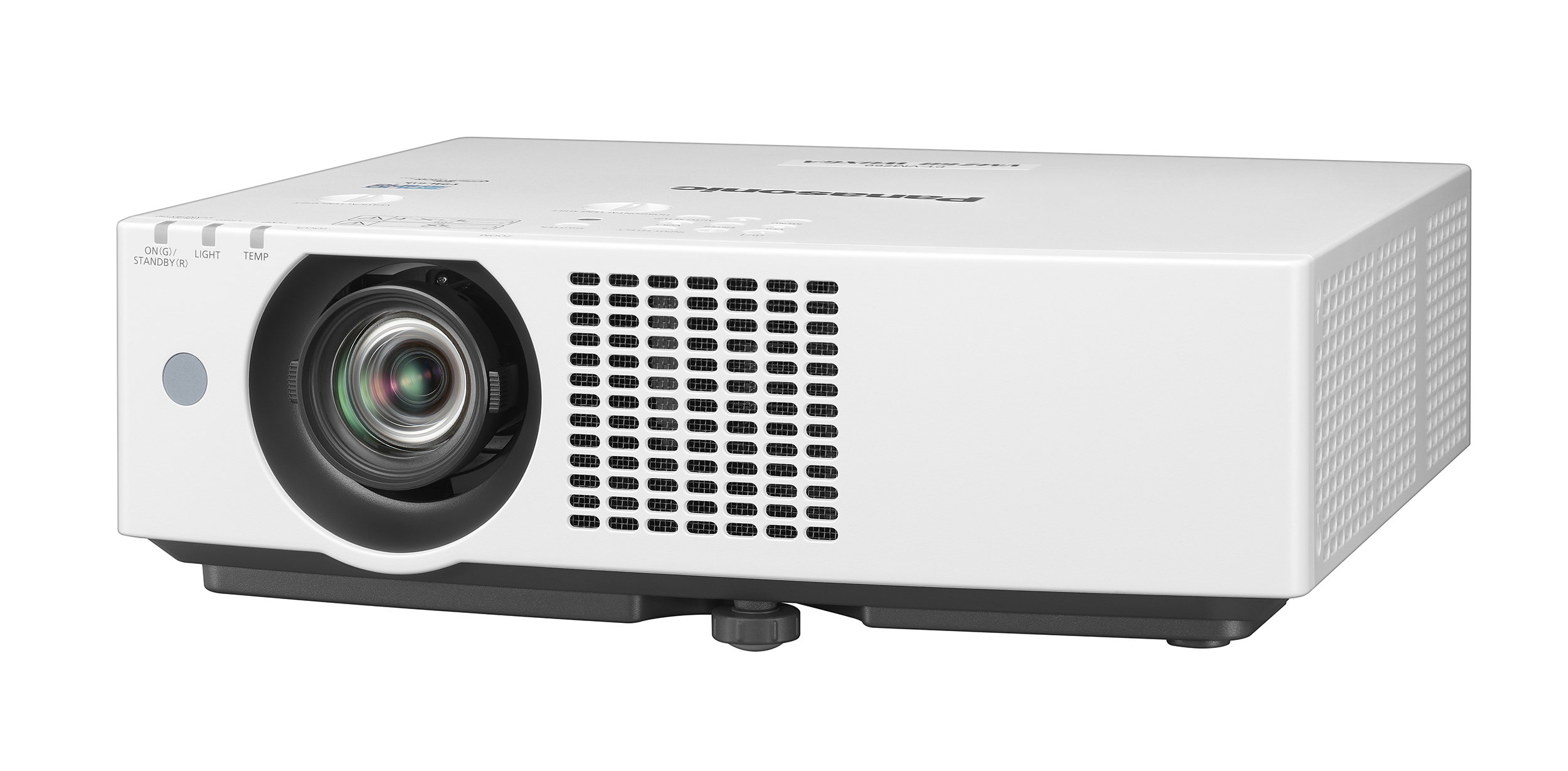
Last month, Panasonic announced the launch of its PT-VMZ50 Series of portable LCD laser projectors for classrooms, board and conference rooms and other education and corporate environments. The PT-VMZ50 Series consists of the PT-VMZ50U, PT-VMZ40U and the PT-VMW50U portable LCD laser projectors. They will be available this month with a brightness range of 4,500 to 6,000 lumens and a choice of WUXGA (1920×1200) or WXGA (1280×800) resolutions. All PTVMZ50 LCD laser projectors feature 1.6x zoom lenses for short throw-distances (throw ratio: 1.09-1.77:1) best for close range projection. The projectors support wide V/H lensshift and support document and video sharing wirelessly. The series support 4K signal input via HDMI and Panasonic’s DIGITAL LINK connection, based on HDBase-T, which transmits video, audio, and control signals through a single LAN cable for distances of up to 150 meters (492 feet) for full HD video and 50 meters (164 feet) for 4K video. A Quick Start/ Quick Off feature makes it possible to project images in one second from Standby condition so the presentation can start immediately. The series includes USB Memory Viewer function, which displays images stored on USB memory devices without need of a PC, and a built-in 10W speaker.
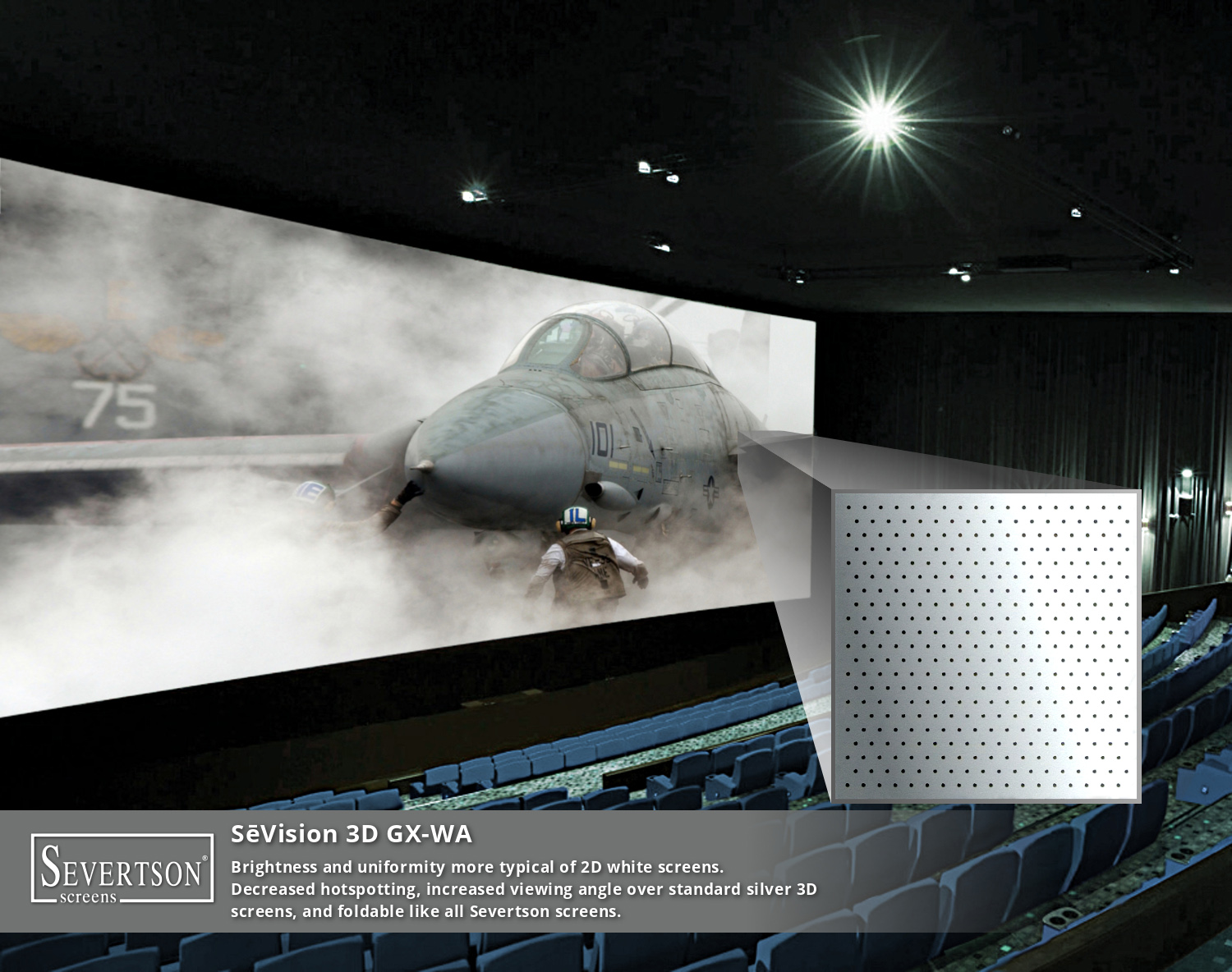
Severtson Screens recently introduced enhanced SēVision 3D GX-WA projection screen coating, providing the benefits of the standard SēVision 3D GX coating, but with what the company describes as increased uniformity and brightness typically seen more often on 2D white screens. It is also engineered specifically to increase the viewing angle over standard silver screens while also reducing hot-spotting. Gain is 1.4 – 3.0 on axis +/- 0.2; signal to noise ratio: 100 – 200+:1. It’s available in standard, micro, and digital perforations as well as no-perf; panels are 62-in. wide and 12mm thick with 6-in. standard grommet spacing and optional larger and smaller spacings. Like all Severtson screens it is uniquely foldable for transportation in smaller crates.
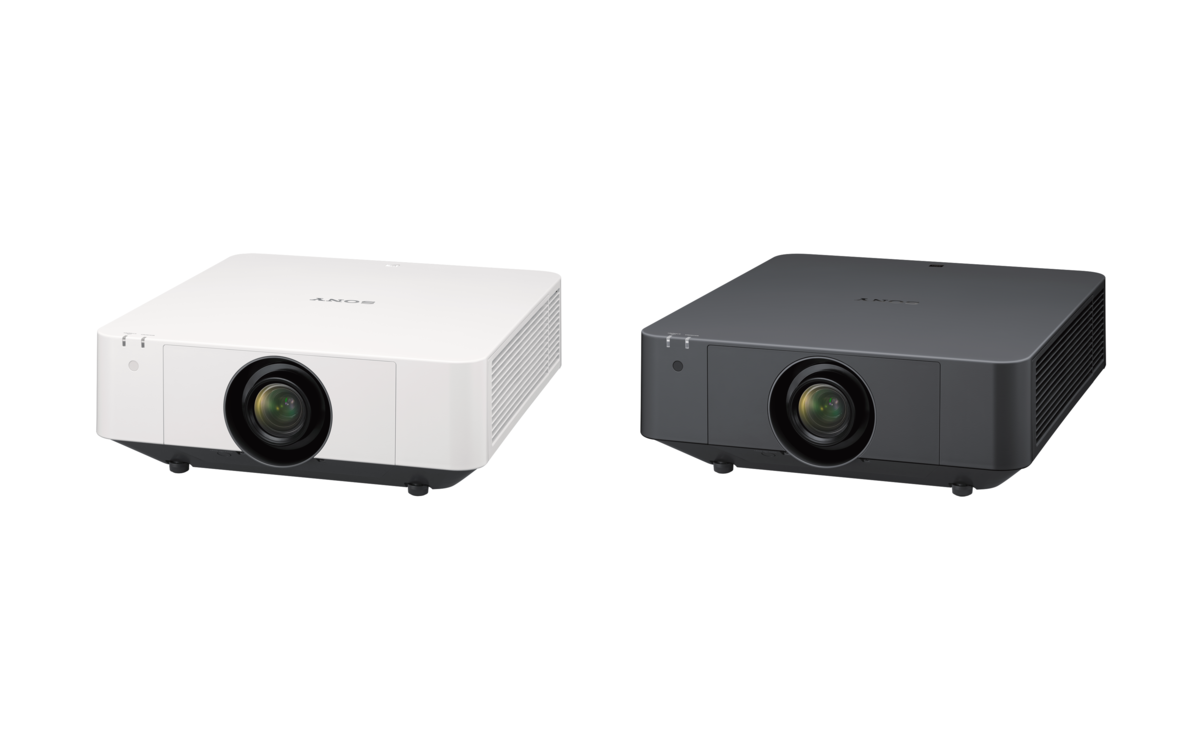
Sony made a significant addition to the laser projection lineup with two new installation models, the VPL-FHZ75 and VPL-FHZ70. The new additions are designed to respond to increased market demand for immersive and high brightness projection in midsize environments such as schools, corporations, churches, museums, and entertainment installations. With these models Sony ports high-end image quality into a lightweight and unobtrusive form factor. Both models have WUXGA resolution with color light output of 6500lm and 5500lm, respectively. The new models use a newly-developed 0.76-inch LCD panel with an incorporated optical compensator for better color, contrast, and blacks, and are driven with the same image engine as the flagship VPL-FHZ120L. The projectors also utilize Sony’s classic super-resolution Reality Creation algorithm. Key for installers is Sony’s “intelligent setting” feature, which the company says was developed over long-term experience and customer feedback. This new feature automatically selects the best configuration based on the projectors’ environment. The four pre-set modes include: meeting/ classrooms, museums, entertainment venues, and multi-screen setups. These modes enable users to optimize the projectors’ performance in relation to each environment, whether a well-lit meeting room where brightness is most important, quiet environments such as museums requiring low noise level, or multiscreen usage where color matching is essential. These projectors can also be placed in higher-positions due to the industry’s widest lens shift capability of Vertical +70% and they integrate with Sony’s range of BRAVIA pro displays. The VPL-FHZ75 and VPL-FHZ70 are planned to be available in spring 2019 and will come in both black and white.


